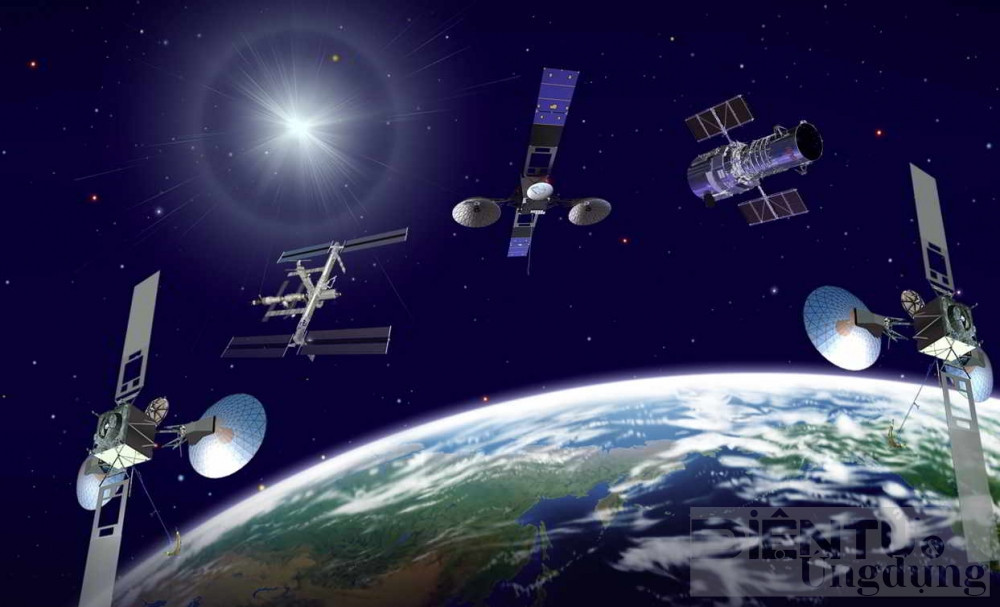
On February 19, the National Assembly approved a resolution introducing special policies to accelerate scientific and technological advancements, innovation, and digital transformation.
One key component of this resolution is the controlled pilot implementation of satellite telecommunications services using LEO satellite technology.
This initiative aims to enhance Vietnam’s digital infrastructure, expand broadband access to remote areas, and strengthen the country’s self-sufficiency in space technology.
However, challenges such as satellite management, space debris, and long-term investment costs must also be carefully considered.
Vietnam’s satellite telecommunications pilot program
Under the new resolution, Vietnam will permit controlled investment in satellite-based telecommunications services without restrictions on foreign ownership.
This approach aims to attract international investors while ensuring national security.
The pilot program will involve licensing telecommunications providers that use LEO satellites. Instead of issuing radio frequency and equipment licenses to end-users, Vietnam will grant these licenses directly to service providers.
This trial phase will be managed by the Prime Minister and is limited to five years, with a deadline of January 1, 2031.
The decision on each pilot project will be based on factors such as economic development needs, national security requirements, service coverage limits, subscriber caps, and frequency allocations.
The Ministry of Science and Technology will be responsible for issuing, modifying, and revoking business licenses for LEO satellite-based telecommunications providers.
Meanwhile, the Ministry of National Defense and the Ministry of Public Security will oversee security measures to regulate and monitor the program.
The benefits of LEO satellite technology for Vietnam
Experts believe that deploying LEO satellites can bring significant benefits to Vietnam, particularly in providing telecommunications and internet services in remote and underdeveloped areas.
Satellite-based broadband can enable high-speed internet access for businesses, government agencies, schools, and individuals, regardless of their location.
The development of satellite phones, for example, is seen as a revolutionary advancement in mobile communications, eliminating connectivity gaps in regions where traditional cell towers and fiber-optic networks are impractical.
Globally, an estimated 350 million people lack access to mobile broadband. LEO satellite technology has the potential to bridge this digital divide by bringing connectivity to underserved communities.
Beyond telecommunications, LEO satellites offer other critical applications, including:
Earth observation: Monitoring climate change, tracking natural disasters, and conducting environmental assessments.
National defense and security: Enhancing border surveillance, territorial monitoring, and strategic defense initiatives.
Technological independence: Strengthening Vietnam’s domestic capabilities in space technology and reducing reliance on foreign infrastructure.
Vietnam’s space technology progress and future prospects
Vietnam has already made significant strides in satellite technology. In 2013, the country launched VNREDSat-1, an Earth observation satellite designed for environmental and resource monitoring.
Operating in low-Earth orbit, VNREDSat-1 provides high-resolution imagery for agricultural, forestry, and climate studies.
In 2018, Vietnam introduced Microsat-1, another LEO satellite dedicated to scientific research and environmental monitoring. Both satellites were launched with the support of India’s Indian Space Research Organisation (ISRO), highlighting Vietnam’s strategic space collaboration with India.
As global players like the U.S. and private companies such as SpaceX continue expanding LEO satellite networks - such as SpaceX’s Starlink, which aims to deploy up to 12,000 satellites - Vietnam must determine a viable approach that aligns with its economic and technological capabilities.
A full-scale national satellite program requires significant investment. The cost of launching a CubeSat (small satellite) ranges from $100,000 to $500,000, while SmallSats can cost between $1 million and $10 million. More complex, large-scale satellites may require $10 million to $100 million per unit, excluding operational expenses.
For Vietnam to successfully deploy LEO satellites for communication, environmental monitoring, and research, initial investments could reach several million dollars per satellite, with additional costs for launches and long-term operations.
Challenges and considerations for Vietnam’s LEO satellite deployment
Despite its advantages, LEO satellite technology presents challenges, particularly regarding space debris management and satellite regulation.
Without effective control mechanisms, inactive satellites and space debris could pose risks to active satellites and future missions.
To address these concerns, Vietnam must establish clear policies for satellite maintenance, decommissioning, and space traffic management.
Developing a robust framework for satellite operations will be essential in ensuring the sustainability and security of the nation’s space initiatives.
As Vietnam embarks on its LEO satellite journey, careful planning, strategic investments, and strong regulatory measures will be key to maximizing benefits while mitigating risks.
Thai Khang